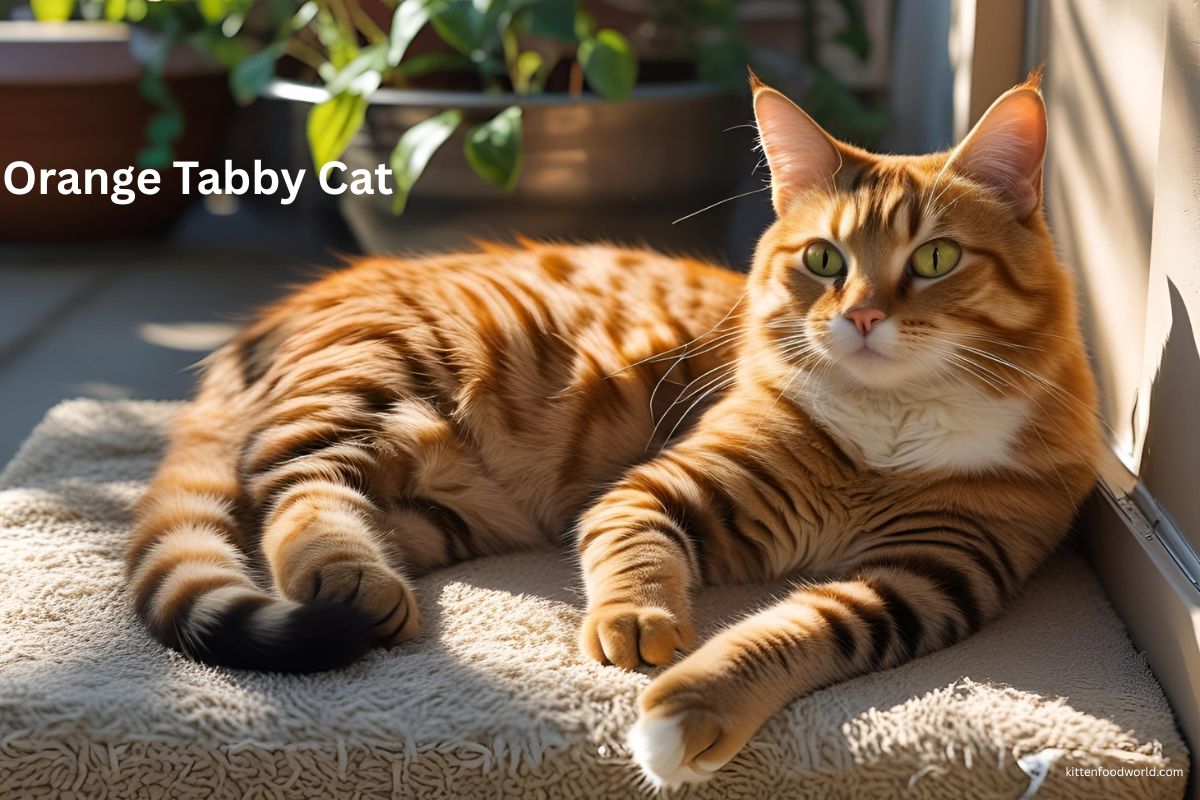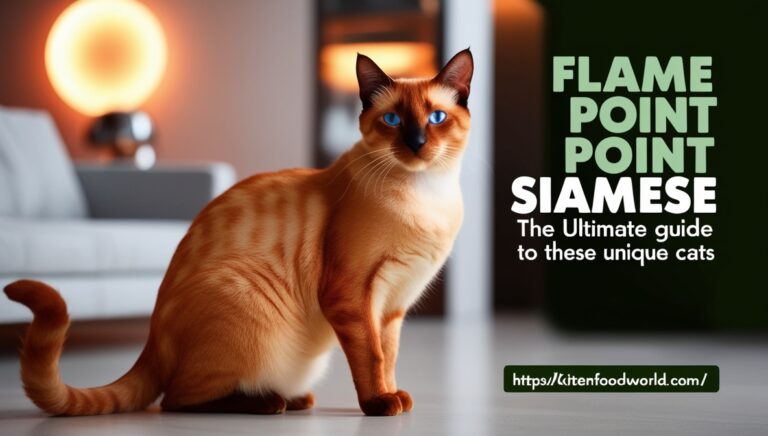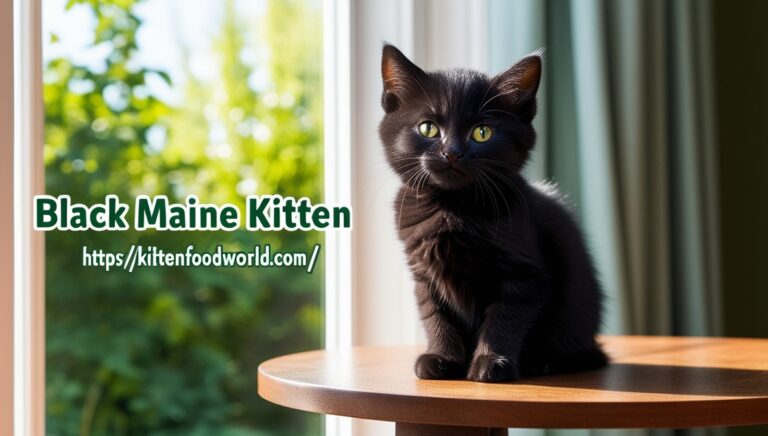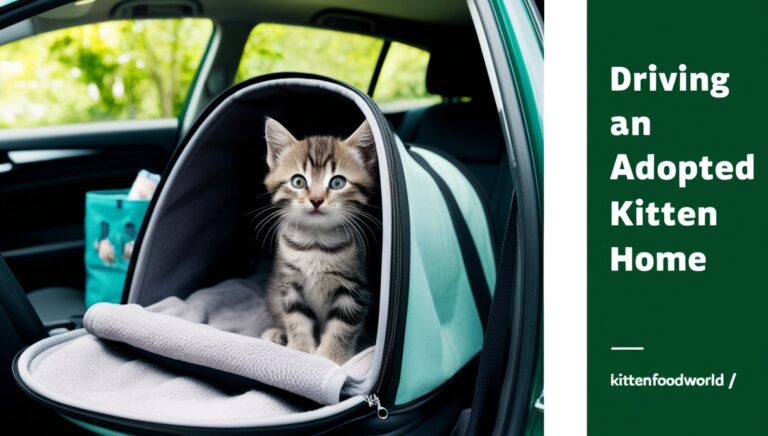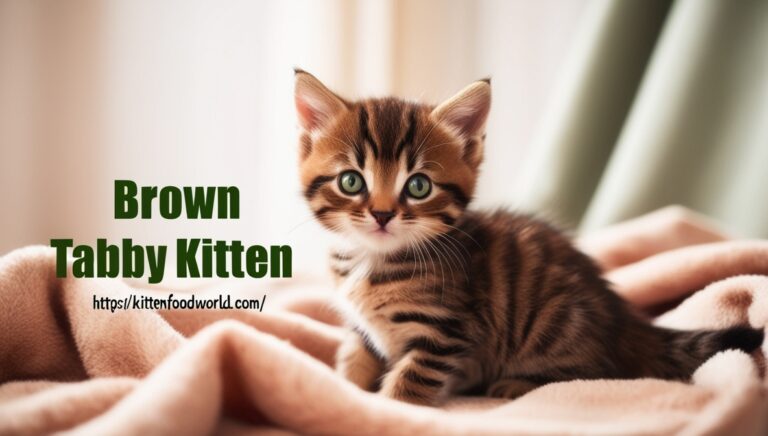Orange Tabby Cat: Everything You Need to Know About These Adorable Felines
Introduction
The orange tabby cat is one of the most recognizable and loved feline types across the world.
With its bold coat patterns, warm coloring, and often friendly personality, it’s easy to see why so many families are drawn to the orange tabby. Whether you’re caring for an orange tabby kitten or living with an older orange and white cat, their charm is undeniable.
These cats are often playful, affectionate, and full of character. From the classic orange striped cat to the elegant orange and white tabby cat, their appearance stands out in every room. You’ll find both male and female cats with these markings, although the orange female cat is less common.
Whether it’s a solid orange cat, an orange tabby with white patches, or a fully orange white cat, each variation brings something special. This guide covers everything about the orange tabby and why it holds such a special place in homes worldwide.
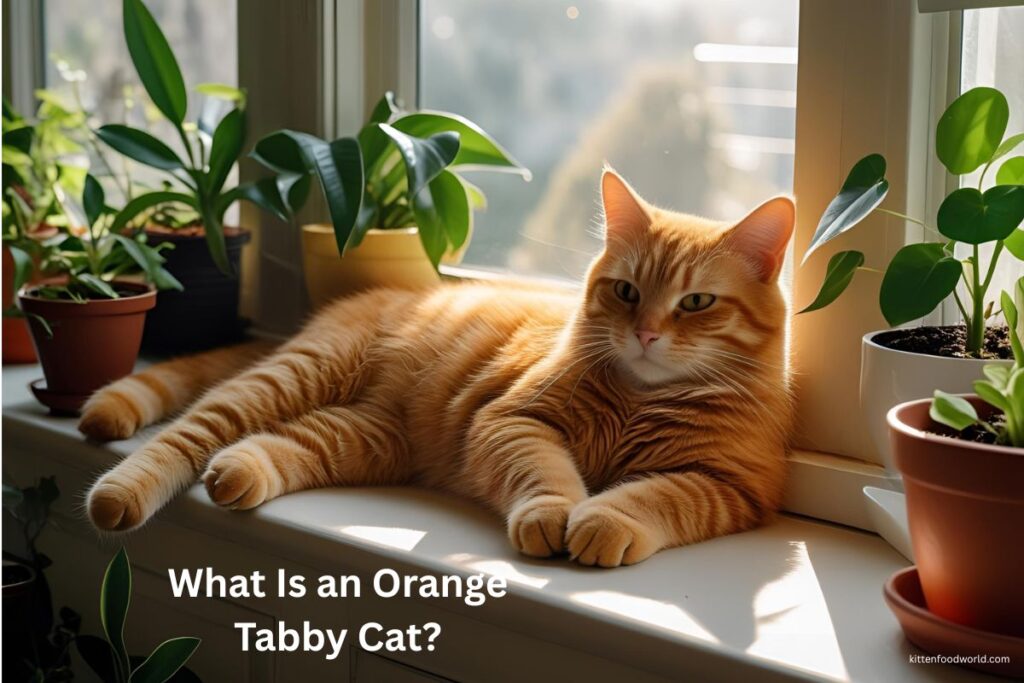
What Is an Orange Tabby Cat?
An orange tabby cat is not a specific breed but a cat with a distinctive coat pattern and color. The term “tabby” refers to the striped or spotted markings that appear on the fur, which can be found in many cat breeds.
The “orange” in an orange tabby cat describes the coat color, which ranges from bright orange to a more muted, reddish tone. This color results from a gene affecting pigment production and is most often seen in male cats. Orange tabby kittens display these striking colors early on.
Common patterns on orange tabby cats include classic swirls, mackerel stripes, spotted dots, and ticked fur. Some cats also have an orange and white cat coat, which combines patches of orange tabby markings with white areas. Whether it’s an orange and white tabby, an orange female cat, or a bright orange striped cat, these felines are loved for their vivid appearance and playful nature.

Are Orange Tabby Cats a Breed?
An orange tabby cat is not a breed—it’s a coat color and pattern combination seen in various cat breeds. The term “tabby” refers to the distinct markings such as stripes, swirls, or spots, while “orange” describes the fur color. Many people confuse coat color with breed, but they are not the same. A tabby cat can belong to multiple breeds or be a mixed-breed cat with a specific coat pattern.
Several cat breeds commonly display the orange tabby pattern, including the Maine Coon, British Shorthair, Persian, American Shorthair, and Abyssinian. These cats can have various personalities and physical traits, but the orange coloring ties them together visually.
The orange color comes from a gene called the O gene, located on the X chromosome. This gene triggers the production of pheomelanin, the pigment responsible for red and orange hues. That’s why male cats are more likely to be orange than females.

Personality Traits of Orange Tabby Cats
The orange tabby cat is often seen as outgoing, playful, and affectionate. While there’s no scientific evidence linking coat color to personality, many cat owners report that orange tabbies tend to be more sociable and friendly than other cats. They may enjoy cuddles, follow their humans around, and even greet guests at the door. This behavior makes them a favorite for families and cat lovers.
Some people believe that orange tabby kittens are more laid-back or loving, but personality depends more on breed and environment than fur color. Still, this pattern is strongly associated with a gentle, attention-seeking nature. Male orange tabbies, in particular, are often described as more playful and people-oriented.
There are also several myths about orange and white tabby cats being lazy or gluttonous. While some may have a hearty appetite, their behavior varies just like any other cat. A healthy diet and proper activity help manage any behavioral quirks.
Physical Characteristics
An orange tabby cat is known for its striking coat patterns and expressive eyes. These cats often have golden, green, or copper-colored eyes, giving them a warm and friendly appearance. Some orange tabby kittens may have blue eyes at birth, which usually change as they grow.
Their coats can range from short and sleek to medium or long, depending on the breed. Common patterns include classic swirls, thin stripes, and spotted designs, giving each orange striped cat a unique look. The coat texture can be soft or slightly coarse, but it’s often dense enough to offer some protection.
Male orange tabby cats tend to outnumber females due to genetics. While both genders share similar features, some people say male orange cats may grow slightly larger and have broader heads. Female orange-tabby cats, though less common, are equally striking in appearance. Whether it’s an orange and white cat, an orange and white tabby, or a solid orange variety, each one carries a charm that cat lovers admire.
Health and Lifespan of Orange Tabby Cats
The average lifespan of an orange tabby cat ranges from 12 to 16 years when kept indoors with good care. Like other cats, their health depends on lifestyle, genetics, and diet. An indoor orange and white tabby cat typically lives longer than those allowed to roam outside.
Some health issues that may affect these cats include obesity, dental disease, and urinary tract problems. Male orange cats can be more prone to blockages, especially if neutered and sedentary. Regular checkups, vaccinations, and weight monitoring can support a healthier life.
Keeping an orange white cat active with toys and daily play helps maintain fitness. Balanced nutrition is also important. For detailed food suggestions tailored for kittens and adult cats, check out our guide on kitten food.
Orange tabby kittens require more protein and fat in their diet to support their rapid growth. A proper feeding plan, clean water, and a safe, loving home all contribute to the long-term health of your orange tabby or orange and white cat companion.
Gender and Color Facts
Most people are surprised to learn that the majority of orange tabby cats are male. This is tied to genetics. The gene responsible for orange coloring is carried on the X chromosome. Male cats have one X and one Y chromosome (XY), so they need only one copy of the orange gene to show the orange coat. Female cats have two X chromosomes (XX), so they would need the orange gene on both to become an orange female cat, which is less likely.
This is why male orange tabby kittens and adult males are far more common. Females can still have the coloring, but they’re rare. When they do appear, they can be orange and white tabby cats, or occasionally even tortoiseshell with orange patches.
Whether your cat is a solid orange tabby, a bright orange and white cat, or has orange striped cat markings, the color is directly influenced by these genetic factors. These genes play a large role in how an orange white cat appears.
Fun Facts About Orange Tabby Cats
The orange tabby cat is often loved not just for its appearance but also for its personality and place in pop culture. One famous example is Garfield, known for his orange stripes and love for lasagna. Another is Orangey, a movie star cat who appeared in “Breakfast at Tiffany’s.” These cats helped make the orange tabby iconic in media.
Many orange and white tabby cats develop tiny black freckles on their noses or lips as they age. These spots are usually harmless and are more visible in lighter-colored cats like the orange and white cat or orange white cat.
Historically, the orange striped cat has been a favorite companion in many households. Their bold markings and warm hues make them stand out. Whether it’s a kitten or an adult, an orange tabby kitten often gets attention for its playful behavior and friendly nature.
From legends to screen fame, the charm of the orange-tabby cat continues to grow with every generation.
Orange Tabby Cats and Their Breeds
The orange tabby cat can be found in many cat breeds, including British Shorthair, American Shorthair, Maine Coon, Persian, and Exotic Shorthair. This coat pattern is the result of genetics and isn’t limited to one specific breed. The recognizable orange coat with stripes or swirls is seen in both long-haired and short-haired breeds. While the classic orange tabby shows bold stripes, some breeds may display a subtler mackerel or ticked pattern.
Personality traits may vary depending on the breed. For example, an orange tabby Maine Coon might be playful and energetic, while a Persian with the same coat may appear more laid-back. Each breed brings its own behavioral tendencies.
Grooming needs also depend on the breed type. Long-haired orange and white tabby cats like the Persian require daily brushing to prevent mats, while short-haired orange and white cats need less maintenance. Regardless of breed, keeping an orange striped cat well-groomed helps maintain a healthy coat and reduces shedding.
Caring for an Orange Tabby Cat
Feeding a healthy orange tabby cat starts with age-appropriate food. An orange tabby kitten needs more calories and nutrients than an adult. Choose food rich in protein and low in fillers. Wet food may be beneficial for hydration, especially for indoor orange and white cats.
Regular grooming keeps your cat’s coat clean and shiny. Short-haired breeds like an orange and white tabby cat may only need brushing once a week, while long-haired types require more frequent grooming. This helps prevent tangles and reduces fur buildup around the home.
For litter habits, use a clean and quiet area. Keep the litter box fresh to avoid accidents. Most orange white cats are quick learners and adapt easily to good litter habits. Consistency matters.
To keep an orange cat active, provide toys, climbing posts, and window perches. These cats love interaction and benefit from play sessions. Whether you have an orange female cat or a curious male, regular mental and physical activity supports their well-being and reduces boredom.
Adoption Tips and Choosing an Orange Tabby Cat
If you’re thinking about bringing home an orange-tabby cat, there are a few practical steps that can help you find the right match. Start by visiting local shelters or rescue centers. These places often have a variety of orange tabby kittens and adult cats, including orange and white cats or orange striped cats that are looking for loving homes.
Before adopting, check for signs of good health—clear eyes, a clean coat, and a friendly attitude. Ask about the cat’s behavior history and if it’s been socialized. Whether it’s an orange and white tabby cat or a solid orange cat, personality matters just as much as appearance.
Your home environment also plays a part. An active kitten may need more playtime, while a calm orange female cat might be better suited for a quieter household. Think about your daily routine, space, and energy level to choose the orange and white tabby that fits your lifestyle. Matching the right orange-tabby cat with the right setting leads to a happy long-term bond.
Common Misconceptions
There are several myths about the orange tabby cat that continue to circulate, even among experienced pet lovers. One common claim is that all orange tabbies are male. While it’s true that the orange gene is more commonly found in males, orange female cats do exist—they’re just less common.
Another idea is that orange-tabby cats are always lazy or tend to gain weight quickly. While some may enjoy lounging, this isn’t unique to their coat color. Activity level depends on the individual cat, not whether it’s an orange and white cat or a striped tabby.
Some believe the color of an orange tabby kitten affects its personality. This isn’t backed by science. An orange and white tabby cat can be outgoing or reserved, just like any other. The temperament comes from the cat’s experiences and genetics, not the color alone.
Whether you’re drawn to an orange and white cat or an orange striped cat, it’s better to spend time getting to know the cat’s actual behavior rather than relying on assumptions based on color.
Frequently Asked Questions About the Orange Tabby Cat
What is so special about orange tabby cats?
The orange-tabby cat is known for its warm-colored coat and charming personality. Many owners describe them as social, gentle, and affectionate. Their distinct coloring and the famous “M” marking on their forehead make them easy to recognize. These cats often become fast favorites in households due to their outgoing behavior.
Is the orange tabby cat rare?
Orange-tabby cats are not rare. In fact, they are quite common, especially among male cats. Nearly 80% of orange-tabby cats are male because of the way coat color is linked to genetics.
What is the difference between an orange tabby and a ginger tabby?
There is no real difference between an orange tabby and a ginger tabby. Both terms refer to the same color pattern. “Ginger” is more commonly used in the UK, while “orange” is often used in the US.
What breed is orange tabby?
An orange-tabby cat is not a specific breed. The orange coloring and tabby pattern can appear in many breeds, such as the American Shorthair, Maine Coon, Persian, British Shorthair, and more.
Are all orange tabby cats female?
No, most orange-tabby cats are male. The orange coloring is linked to the X chromosome. Male cats need only one copy to show the orange coat, while females need two, making orange female cats less common.
Do orange tabby cats like to be held?
Many orange-tabby cats enjoy being held, especially if they are socialized from a young age. However, this can vary based on the cat’s individual personality and past experiences.
Why are orange cats so clingy?
Orange-tabby cats are often described as clingy because they tend to form strong bonds with their humans. Their social behavior may make them more likely to follow people around the house, meow for attention, or seek cuddles.
What is the lifespan of an orange cat?
The average lifespan of an orange-tabby cat is around 12 to 16 years. With regular checkups, a good diet, and a safe environment, some live even longer.
Why do orange cats have a reputation?
Orange cats have built a reputation for being friendly, laid-back, and talkative. Some people believe this comes from popular characters like Garfield or simply from observing their own cats’ personalities.
What color eyes do orange cats have?
Most orange-tabby cats have golden, copper, or amber eyes. In some cases, especially when they are still kittens, their eyes may appear blue or green and then change over time.
What does it mean when a cat stretches in front of you?
When a cat stretches in front of you, it’s usually a sign of comfort and trust. They feel relaxed enough to expose their belly or body while near you, which is a good sign of a positive bond.
What is the rarest cat color?
Some of the rarest cat colors include solid chocolate, lavender, and cinnamon. These shades are harder to find due to specific genetic combinations.
How long do tabby cats usually live?
Tabby cats, regardless of color, generally live 12 to 18 years, depending on genetics, health care, and lifestyle.
Why do orange cats get freckles?
Freckles in orange and white cats often appear on the nose, lips, or gums. These dark spots are caused by pigment-producing cells and are more common in cats with lighter coat colors.
Why do orange tabby cats have an M on their forehead?
The “M” marking is part of the tabby gene pattern. All tabby cats have it, not just the orange ones. This marking is most visible on short-haired orange tabbies with lighter shades on their heads.
How much does an orange tabby cat cost?
The cost of an orange-tabby cat can range from $50 to $300 if adopted from a shelter, and $500 to over $2,000 if purchased from a breeder, depending on the breed and location.
Why do orange tabby cats meow so much?
Orange-tabby cats can be quite vocal. This could be a personality trait, a way to get attention, or a signal that they need something like food, play, or comfort.
Are orange tabby cats high maintenance?
Most orange-tabby cats are low to moderate maintenance. Short-haired cats need minimal grooming, while long-haired orange and white tabby cats may require regular brushing to keep their coats tangle-free.
What age do tabby cats calm down?
Tabby kittens are often playful and full of energy in their early months. Many orange tabby kittens begin to calm down around one to two years of age, especially after being spayed or neutered.
What is a good orange cat name?
Popular names for orange cats include Ginger, Marmalade, Sunny, Pumpkin, Rusty, and Amber. These names often reflect their vibrant coat color.
Are male or female cats more affectionate?
Personality varies more by individual than gender, but many cat owners report male cats, especially orange males, as being more outwardly affectionate.
Are orange tabby cats smart?
Orange-tabby cats are known to be clever and curious. They often enjoy puzzle toys, exploring new environments, and learning routines quickly.
What is the rarest breed of cat?
Some of the rarest cat breeds include the Sokoke, American Wirehair, and Kurilian Bobtail. These breeds are not commonly seen and may have limited availability worldwide.
What is the Garfield breed?
Garfield is a fictional cat, but his appearance resembles a Persian or Exotic Shorthair with orange and white tabby markings and a round face.
Why are orange tabby cats special?
Many cat lovers consider orange-tabby cats special because of their color, expressive personalities, and social nature. They’re often gentle, friendly, and love attention.
Are orange tabby cats snuggly?
Yes, many orange-tabby cats enjoy snuggling and being close to their owners. This trait makes them excellent companions for families or individuals looking for a friendly pet.
Which orange tabby is rare?
The rarest type of orange tabby is the female orange and white cat. Because of how coat color genes are inherited, orange females are much less common.
What is the lifespan of a ginger cat?
Ginger cats, also known as orange tabbies, typically live 12 to 16 years, though some may reach 18 or more with proper care.
What is the M on a tabby cat?
The M marking on a tabby cat’s forehead is part of the tabby gene pattern. All tabby cats, whether orange striped cats or brown tabbies, carry this characteristic.
What is a black cat called?
A black cat doesn’t have a special name based solely on color. The term “black cat” refers to any breed with a solid black coat, such as the Bombay or the American Shorthair.
Conclusion
The charm of the orange tabby cat lies in its warm colors, friendly attitude, and playful personality. From the spirited orange tabby kitten to the affectionate orange and white cat, these felines bring joy into many homes. Their bold coats—whether on a classic orange striped cat or a soft-coated orange and white tabby cat—make them stand out.
Many owners speak highly of the bonds they share with their orange cat, including the rarer orange female cat. Whether you have an orange white cat or a mischievous orange and white tabby, these pets often become loyal companions.
Caring for an orange tabby is a rewarding experience, and if you’re interested in learning more, explore our guides on kitten nutrition, health, and behavior at kittenfoodworld.com. Each article is designed to support your journey with your furry friend, no matter their shade or pattern.

